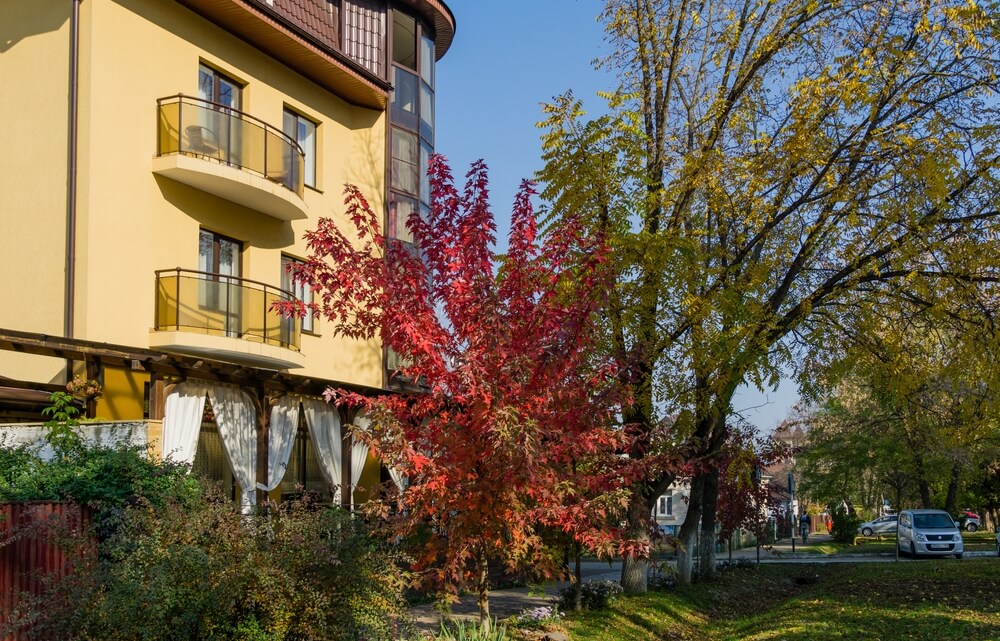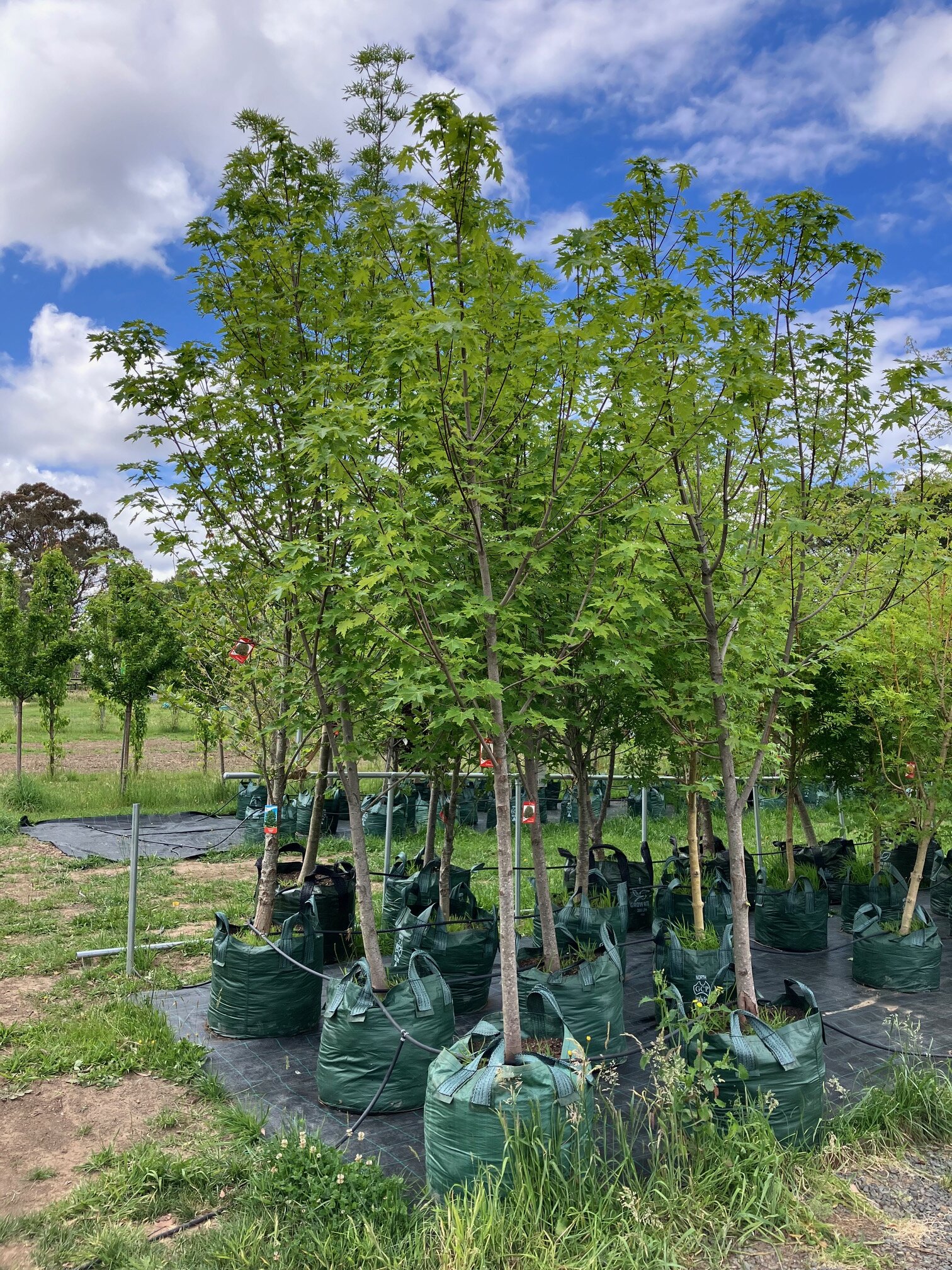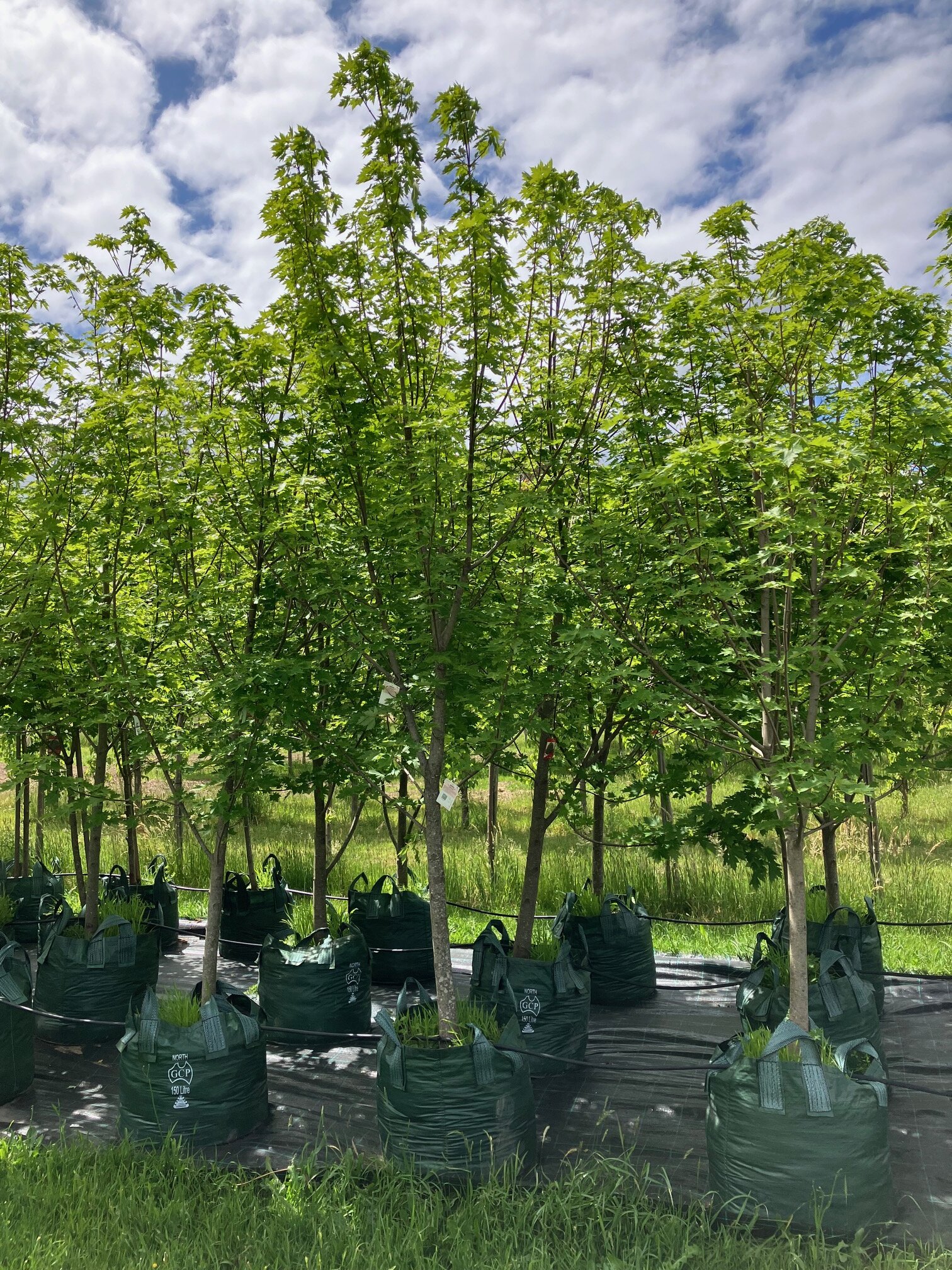Acer x freemanii ‘Celebration’ 150L ADVXG TREE DECIDUOUD
$1,250.00
Acer is a genus of trees and shrubs commonly known as maples. They are widely distributed across the Northern Hemisphere, with many species found in Asia and North America. Here are some horticultural notes on the genus Acer:
Growing conditions: Acer species generally prefer full sun to partial shade. They grow well in most soil types, but prefer moist, well-drained soils. Many species are tolerant of wet soils and some are also tolerant of drought.
Propagation: Maples can be propagated from seed or by cuttings. Seeds should be sown in the fall, and will require stratification (cold treatment) before germination. Cuttings can be taken in the summer and rooted in a well-draining soil mix.
Watering: Maples require regular watering, particularly during the first few years of growth. After they are established, they are fairly drought-tolerant.
Fertilizer: Maples benefit from regular fertilization with a balanced fertilizer. Fertilizer should be applied in the spring and fall.
Pruning: Prune maples in the late winter or early spring, before new growth begins. Remove any dead, diseased, or crossing branches. Thin out the center of the tree to promote air circulation.
Pests and diseases: Maples are susceptible to a variety of pests and diseases, including aphids, scale insects, and powdery mildew. Regular monitoring and treatment with insecticides or fungicides may be necessary.
Fall color: Many maple species have attractive fall foliage, with leaves turning shades of yellow, orange, and red.
Sap: Some maple species produce sap that can be harvested and boiled down to make maple syrup.
Wood use: Maple wood is used for a variety of purposes, including furniture, flooring, and musical instruments. The wood is hard, strong, and has a fine texture.
13 in stock
Description
- Family Name: Aceraceae
- Origin: North America
- Characteristics:
- Foliage Colours: Green, yellow & red
- Flower Colours: Inconspicuous, bright red flowers. Female
- Flower Fragrant: No
- Flowering Season: Spring
- Fruit: Insignificant
- Landscape Use(s): Suitable as a shade or specimen tree in
parks and gardens and is ideal in size and habit for car parks,
avenues and streets
- Pest & Diseases: Generally trouble free
- Plant Care: Annual slow release fertiliser, keep moist during dry periods, Mulch wel
- Requirements:
- Growth Rate: Moderate to fast
- Maintenance Level: Low
- Water Usage: Medium
- Tolerances:
- Drought: Low
- Frost: Moderate
- Wind: Moderate
- Cultural Notes: Wide range of soil and climatic conditions including relatively wet sites and moderate air pollution. Avoid pruning in late
winter and early spring. Prune to develop crown and string limb angles




